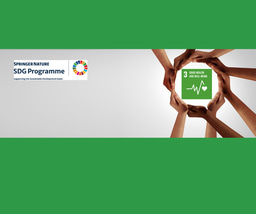The Virtual Voyage: Reimagining Field Trips in the Digital Era
Published in Education

As the world grappled with the COVID-19 pandemic, a significant challenge emerged in the field of education: maintaining the enriching experience of field trips amidst widespread school closures and restrictions. Traditionally, field trips are integral to primary education, offering hands-on, experiential learning outside the classroom. However, the pandemic brought about a swift decline in these valuable educational excursions.
What was the problem?
The initial problem faced by educators and students alike was the steady decline in field trips, a longstanding and crucial component of primary education. These excursions extend learning beyond classroom walls, allowing students to directly engage with and understand the real-world applications of their classroom lessons. However, various factors such as restricted budgets, time limitations, safety concerns, and logistical challenges had already been contributing to a decrease in these valuable educational experiences. The advent of the COVID-19 pandemic exacerbated these issues, leading to widespread school closures and further limiting opportunities for such hands-on, experiential learning.
Compounding the problem was the recognition of the significant role that field trips play in student learning. Research has consistently shown that well-organized field trips, aligned with the school curriculum and designed to meet specific educational objectives, result in successful cognitive, affective, and psychomotor learning outcomes. They offer students a chance to develop a greater vocabulary, enhance their perception of learning, and foster a heightened interest in the outdoors. The decline of these trips meant a loss of opportunities for students to form an experiential connection with their environment, impacting not only their academic development but also their ability to apply classroom knowledge in real-world settings.
What We Did?
In response to the challenges posed by the decline of traditional field trips, our team initiated a research project to explore alternative educational strategies. We focused on the implementation of Virtual Field Trips (VFTs) using 360-degree videos as a potential substitute for physical field trips in primary education. This innovative approach aimed to harness the immersive capabilities of 360-degree videos to simulate the field trip experience virtually. To evaluate this approach, we recruited third-grade students from two private elementary schools and designed a switching-replications experiment. This experiment compared the effectiveness of 360-degree videos (360V) with regular videos (REGV) in delivering a virtual field trip experience. The study spanned across four time points, allowing us to assess the consistency and sustainability of the VFT's impact.
Our research method involved an in-depth analysis of various factors that contribute to the effectiveness of VFTs. We examined content recall, student attitudes towards the VFTs, their perceived usefulness, level of involvement, inquiry, video engagement, and the impact of a virtual guide. This comprehensive approach was aimed at not only assessing the immediate educational impact of VFTs but also at understanding the longer-term cognitive and experiential effects on students. The goal was to determine whether 360-degree video VFTs could effectively replicate the benefits of physical field trips and if they could serve as a viable alternative in situations where traditional field trips are not feasible.
What We Learned?
Our study yielded insightful findings about the effectiveness of 360-degree video Virtual Field Trips (VFTs) in primary education. One of the key discoveries was the significant increase in content recall scores among students who engaged with the 360-degree video format. This was in stark contrast to those who experienced traditional regular videos. The results consistently showed that the immersive nature of 360-degree videos enhanced students' ability to remember and assimilate the content presented during the VFTs. This finding suggests that the immersive experience provided by 360-degree videos can be a powerful tool in enhancing learning and retention in young students.
Another important aspect of our research was identifying the factors that contributed to the effectiveness of the VFTs. We discovered that students' engagement with the video, their involvement in the learning process, and their overall attitude toward the VFTs were significant factors influencing the success of the virtual experience. These elements played a crucial role in how students perceived and interacted with the content, ultimately impacting their learning outcomes. This understanding underscores the importance of not just the technological aspect of VFTs, but also the need for well-structured content and engaging presentations to maximize the educational benefits of virtual field trips.
Conclusion: Embracing a New Era in Education
The research highlighted the adaptability of educational practices in the face of adversity and showcased the potential of emerging technologies to enrich the learning experience. The successful implementation of 360-degree video-based VFTs in primary education could mark the beginning of a new era in experiential learning, one that continues the tradition of field trips in a virtual setting. This study serves as a beacon, guiding the way forward in innovative educational practices, ensuring that the essence of exploration and discovery remains a cornerstone of primary education, even in the most challenging times.







Please sign in or register for FREE
If you are a registered user on Research Communities by Springer Nature, please sign in